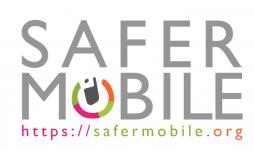facebook
Posted by ccarlon on Nov 18, 2011
The Power of Social Media in Developing Nations data sheet 2259 Views
Abstract:
On January 28, 2011, Egypt’s President, Hosni Mubarak, took the drastic and unprecedented step of shutting off the Internet for five days across an entire nation. His reason for doing so was simple: to halt the flow of communication and coordinated assembly taking place over social media platforms, like Facebook and Twitter. That Mubarak took this desperate step — which cost Egypt an estimated $90 million and outraged the international community — demonstrates the incredible power of social media. Mubarak’s decision to shut off the Internet took place after three days of demonstrations by tens of thousands of Egyptians. Although the demonstrations were centered in Cairo’s Tahrir Square (or “Liberation Square”), there were also substantial demonstrations in Alexandria, Mansoura, and Suez. The protesters expressed outrage over several issues, including state corruption, police brutality, and economic oppression. Their demand was clear: President Hosni Mubarak must leave the country.
Various groups, including April 6 Youth Movement, We Are All Khaled Said, National Association for Change, and Kefaya led a coordinated effort using social media platforms, including Facebook and Twitter, to spread a revolutionary message. Prior to the first day of protest, 85,000 Egyptians pledged on Facebook to attend “Revolution Day.” Similarly, April 6 Movement had over 90,000 members during the protests, and We Are Khaled Said had over 40,000 Facebook fans. In the two weeks leading up to and including the first few days of the protest, Egyptians created 32,000 Facebook groups and 14,000 Facebook pages. It is likely that a substantial number of the five million Facebook users in Egypt were in some way encouraged to attend the protests.
Posted by MelissaLoudon on Sep 22, 2011
Particularly for smartphones, there are many apps that promise improved privacy and security for your mobile communications. Like all apps, some are very good, but other are poorly written or overpriced, and may even be malicious. This article will help you evaluate whether you should trust their promises.
Before You Start
Security apps are most useful as part of a coherent security policy covering all your mobile communications. The Mobile Risk Assessment Primer will help you complete an inventory of mobile communications risks, and decide which are most important and most feasible to mitigate.
Once you’ve completed a risk assessment, it’s important to search broadly for security apps. MobileActive is in the process of reviewing many of these from our current list of security apps, but the mobile security landscape changes quickly. Ask friends and colleagues, read about your specific security need online, and search your device’s app marketplace. Once you’ve identified as many options as possible, it’s time to start evaluating your security apps.
Will It Work on Your Phone?
As with computer software, some mobile apps are built to work on one platform - Android, iPhone, Blackberry, Symbian, Java - and may not work on others. There may be other requirements too, such as particular phone models. Make sure the apps you have chosen are all going to work on your device.
Also consider how you will actually get the app - can it be downloaded from a web link that you open on your phone, or can you get it from an app marketplace? Some apps can also be downloaded to a PC and transferred via bluetooth or a data cable. This step sounds obvious, but it can be tricky when you don’t have stable Internet access on your phone or aren’t used to the app install process.
Posted by SaferMobile on Aug 09, 2011
Safer Facebook data sheet 6780 Views
Abstract:
Facebook has more than 500 million users, half of which access the site through their mobile phone. Being able to communicate your message to an audience this large is exceptionally valuable. At the same time, your activities on the site generate very detailed information about you and your networks. If you are concerned about surveillance, this information can put you at risk. This how-to explains what those risks are and how to use Facebook on your mobile device more securely.
Facebook has more 500 million users, half of which access the site through their mobile phones. Being able to communicate your message to an audience this large is exceptionally valuable. At the same time your activities on the site generate very detailed information about you and your networks. If you are concerned about surveillance, this information can put you at risk.
Assess Your Facebook Mobile Risks
Like Twitter, Facebook is a way to get your messages to a potentially large audience. It is not a secure method of communication for sensitive information.
This article offers advice about how to mitigate risks when using Facebook as a dissemination and organizing tool. In particular, we consider the following risks:
- The risk that your public activities on Facebook reveal compromising information about you or your networks - for example, revealing the identity of supporters or identifying people who were present at a particular event.
- The risk of your private information being revealed to a third party without your consent.
- The risk that your account details (username and password) are discovered, and that someone may impersonate you.
- The risk of your account being deleted or suspended.
- The risk that Facebook is blocked or becomes inaccessible.
in general, you should only use Facebook to share information that you consider public. Public information can be freely distributed by you, your organization, and your supporters, without any risk to individuals or organizational operations. In communicating public information, you can send and receive this information without taking any precautions.
Posted by AnneryanHeatwole on Mar 25, 2011
Today's Mobile Minute brings you coverage on smartphone security and malware, the struggle for mobile money systems in Africa to reach the level of M-PESA in Kenya, Facebook's move toward feature phones, the success of messaging-specific feature phones, and a guide to mobile donations for Japan.
- After more than 50 Android apps were discovered to be carrying malware in early March, the BBC took a look at mobile security. From the risks involved in keeping a lot of personal data on mobiles to ways in which malware can be used to manipulate phones, the article explores the need for mobile security around smartphone applications.
- In Africa, mobile banking has certainly garnered a lot of publicity and press. But All Africa looks at some of the drawbacks of mobile banking in specific countries where mobile banking systems are active; specifically, the article focuses on the "walled garden" system which makes it expensive to transfer funds between different mobile operators (sometimes with fees from five to 20 percent higher than a transfer between two users on the same mobile operator).
- Facebook recently bought Snaptu, a company that develops applications for feature phones. Snaptu developed Facebook's first feature phone app, and Facebook has now reportedly acquired the company for close to $70 million dollars. The purchase could indicate that Facebook plans to focus on reaching non-smartphone users around the world.
- Cellular-News reports that by 2015, messaging-specific feature phones will grow to encompass 1/3 of all shipped feature phones. Feature phones make up 75% of the handset market, and feature phones that are optimized for messaging services (such as "SMS, MMS, mobile email, and mobile IM") are expected to increase in popularity.
- Want to send a mobile donation to a specific cause for tsunami relief in Japan? Into Mobile has a roundup of shortcodes and the organizations that use them so that you can easily find the best way to donate.
[Mobile Minute Disclaimer: The Mobile Minute is a quick round-up of interesting stories that have come across our RSS and Twitter feeds to keep you informed of the rapid pace of innovation. Read them and enjoy them, but know that we have not deeply investigated these news items. For more in-depth information about the ever-growing field of mobile tech for social change, check out our blog posts, white papers and research, how-tos, and case studies.]
Image courtesy Flickr user QiFei
Posted by AnneryanHeatwole on Nov 09, 2010
Today's Mobile Minute brings you coverage on an iPhone security hole, how mobile phones are used to transfer music in Mali, Facebook's continued mobile marketing strategy, and the Guardian's updated mobile web site.
Posted by AnneryanHeatwole on Oct 19, 2010
Today's Mobile Minute brings you news about the continuous lack of Facebook privacy, the disagreement between IDC and Nokia on Nokia sales figures in India, a ranking of the top five free Android apps for journalists, a TNS study that found social media trumps e-mail as the most popular use for online mobile activity, and mapping indoor spaces with smartphone apps.
Posted by MohiniBhavsar on Jul 09, 2010
Camera Phone Images, Videos, Live Streaming: A Contemporary Visual Trend data sheet 3128 Views
Abstract:
Writing for a new media review is like writing history as events unfold. In a short time, this article will be out of date and perhaps no more than a few personal 2.0 snapshots taken of a slice of our lives circa 2009. Nevertheless, it is useful to draw a clear picture of how this medium is being used today, to define some of its emerging social properties, and to document and pay closer attention to its influence on our daily experiences and self-mediations. By self-mediations I refer to how each one of us decides his or her digital imprint: what we post online, whether they are videos, photographs, CVs, and the like. Due to the enormous quantity of content produced by users – now usually called prosumers – we should pay close attention to these
doings.
My focus will be on how camera phones affect how news is created and shared, reminding us of how closely the concept of ‘newsworthiness’ is linked to immediacy. Then I will briefly compare the camera phone video experience to the cinematic experience and discuss how film narrative and conventions have affected camera use for better or for worse. Finally, I will pose some open questions that touch on the academic and social value of the camera phone images, and on how contextualising them remains a crucial ingredient in all analysis. I will conclude by considering the visual impact that this handheld object is having on our lives and relationships.
Posted by CorinneRamey on Feb 21, 2008
Twitter might tell you what the friend of a friend ate for breakfast or when your cousin is doing his laundry. But, charges Nate Ritter, Twitter is way more than a social networking tool used to communicate the mundane details of everyday life. The mobile phone service has potential -- and in fact, has been used in the past -- for emergency communication and response.



